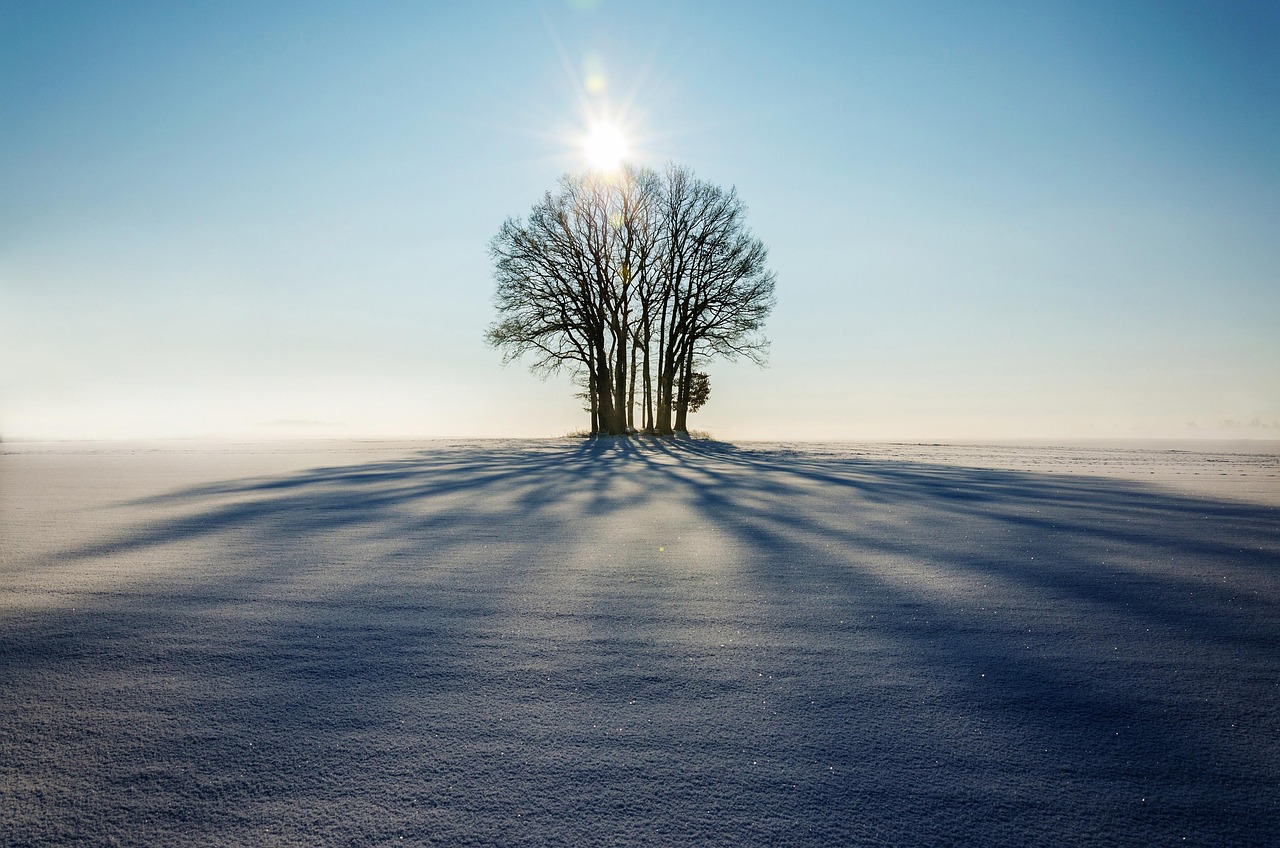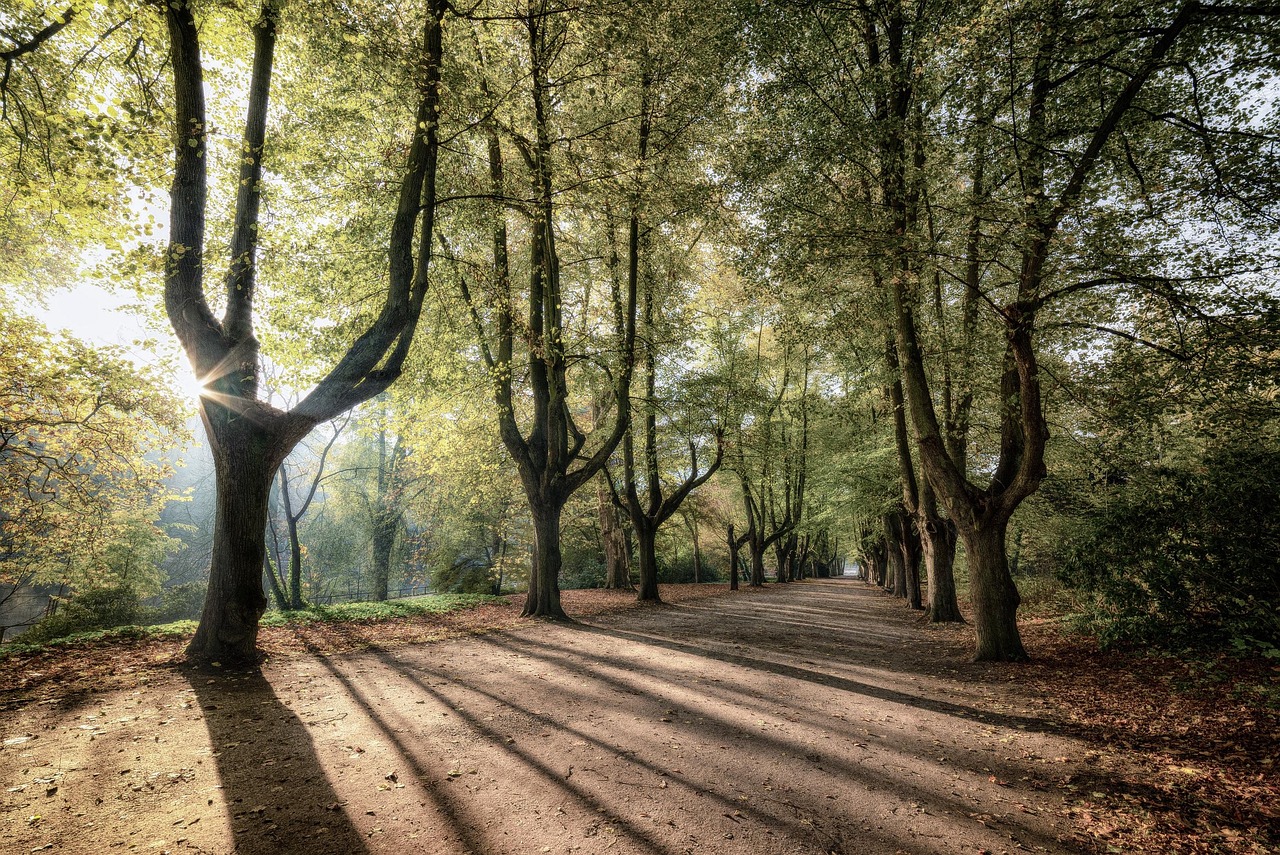The shadow of a tree often symbolizes protection, shelter, and the passage of time. It reflects the interplay between light and darkness, suggesting themes of growth, decay, and the cycle of life.
Trees have long held a significant place in human culture and symbolism. They are not just physical structures found in nature; they carry deep meanings and represent various concepts across different societies. The shadow cast by a tree is particularly rich in symbolism. It can represent comfort and safety while also hinting at the transient nature of life. Understanding this symbolism allows us to appreciate the deeper connections we have with nature.

The act of observing a tree’s shadow can evoke feelings of nostalgia and reflection. It reminds us of the moments spent beneath its branches, perhaps during childhood or in quiet contemplation. As the sun moves, the shadow shifts, illustrating the passage of time and the changes that come with it. This dynamic nature is central to the symbolism associated with trees and their shadows.
Historical Context of Tree Symbolism
Throughout history, trees have been depicted in art, literature, and folklore. Different cultures have attributed various meanings to trees based on their characteristics and the environments in which they grow. Below are some notable symbolic interpretations of trees and their shadows:
- Life and Growth: Trees are often seen as symbols of life due to their ability to grow and regenerate. Their lifecycles closely mirror human experiences.
- Wisdom: Many cultures believe that trees embody wisdom. The age of a tree can signify knowledge and understanding accumulated over time.
- Connection: Trees serve as a connection between earth and sky. Their roots delve deep into the ground while their branches reach for the heavens, symbolizing balance.
- Protection: The shade provided by a tree’s branches can symbolize protection from harsh elements, offering a safe haven for people and animals alike.
In many ancient cultures, trees were venerated as sacred beings. For example, in Celtic mythology, certain trees were believed to possess magical properties. The oak tree, in particular, was seen as a symbol of strength and endurance. Similarly, the banyan tree holds significance in Hinduism, representing immortality due to its ability to grow new trunks from its branches.

The Shadow’s Duality
The shadow cast by a tree embodies both light and darkness, representing duality in life. On one hand, it offers respite from the sun’s harsh rays, providing comfort and coolness. On the other hand, it can also signify obscurity or concealment. This duality encourages reflection on our own lives and the choices we make.
Shadows can also be interpreted as reminders of what is hidden or what lies beneath the surface. Just as a shadow does not reveal the full picture of an object, our perceptions can be limited by what we see or understand at first glance. This notion invites us to explore deeper meanings in our experiences and relationships.
The Role of Trees in Ecosystems
Beyond their symbolic meanings, trees play an essential role in our ecosystems. They provide oxygen, improve air quality, conserve water, preserve soil, and support wildlife. The interaction between trees and their shadows contributes to biodiversity by creating microclimates that support various forms of life.

| Ecological Benefits of Trees | Description |
|---|---|
| Oxygen Production | Trees absorb carbon dioxide and release oxygen through photosynthesis, contributing to cleaner air. |
| Erosion Control | The root systems of trees help bind soil together, preventing erosion and maintaining soil health. |
| Wildlife Habitat | Trees provide shelter and food for numerous species, fostering biodiversity within ecosystems. |
| Climate Regulation | Forests influence local climates by moderating temperatures and maintaining humidity levels. |
As we consider the symbolism of a tree’s shadow, it becomes evident that it encompasses more than just a visual phenomenon. It serves as a metaphor for our experiences with protection, reflection, and the passage of time. By understanding these layers of meaning, we can deepen our connection to nature and appreciate its role in our lives.
Cultural Interpretations and Symbolism of Tree Shadows
The symbolism of tree shadows varies widely across different cultures and traditions. Each society assigns unique meanings to trees and their shadows, reflecting its values, beliefs, and experiences with nature. By examining these cultural interpretations, we can gain a deeper understanding of how trees and their shadows influence human thought and emotion.
Eastern Philosophies
In Eastern philosophies, particularly in Buddhism and Taoism, trees are often seen as symbols of enlightenment. The shadow of a tree can represent a refuge for meditation and introspection. Here are some key concepts related to trees in these traditions:
- Enlightenment: The shade of a tree is viewed as a space for contemplation, where one can seek inner peace and clarity.
- Balance: Trees exemplify the harmony between the material and spiritual worlds. Their roots delve into the earth while their branches stretch towards the sky.
- Interconnectedness: The shadow of a tree symbolizes the connections between all living beings, reminding us that we are part of a larger ecosystem.
Western Symbolism
In Western cultures, trees often symbolize strength and resilience. The shadow cast by a mighty oak or a broad maple can evoke feelings of stability and support. Below are some common symbolic interpretations:

- Protection: Just as ancient civilizations sought shelter under trees, their shadows continue to be seen as protective spaces against adversity.
- Memory: Trees are frequently associated with family lineage and heritage. Their shadows can signify the memories shared among generations.
- Growth: The changing shadows throughout the day reflect the cycles of life, emphasizing growth and renewal.
The Psychological Impact of Tree Shadows
The presence of tree shadows can also have psychological effects on individuals. Nature has a profound impact on mental health, and the calming effect of trees is well-documented. Here are some psychological aspects associated with the shadows of trees:
- Stress Reduction: Spending time in natural environments, particularly under trees, can lower stress levels. The shade provides a cool retreat that encourages relaxation.
- Mindfulness: Sitting in the shadow of a tree can promote mindfulness. The tranquil environment allows individuals to focus on the present moment.
- Aesthetic Pleasure: The interplay between light and shadow creates beautiful patterns that can stimulate creativity and inspire artistic expression.
Artistic Representations of Tree Shadows
The symbolism of tree shadows has inspired countless artists throughout history. From paintings to poetry, artists have sought to capture the essence of trees and their shadows. Some notable representations include:
- Visual Arts: Artists like Claude Monet and Vincent van Gogh have depicted trees and their shadows in ways that convey emotion and atmosphere. Their works often showcase the beauty found in nature’s contrasts.
- Literature: Poets such as Robert Frost have used tree shadows as metaphors for deeper themes like choice, solitude, and the passage of time.
- Photography: Photographers capture the ethereal quality of shadows cast by trees, highlighting their mystery and allure in various settings.
The Role of Tree Shadows in Modern Society
In today’s fast-paced world, tree shadows continue to hold significance. They provide not just physical shade but also emotional relief from the stresses of modern life. Here are ways tree shadows are relevant today:
- Parks and Recreation: Urban parks with large trees offer essential spaces for relaxation, community gatherings, and recreation, promoting mental well-being.
- Sustainability Movements: Awareness about the ecological benefits of trees has increased. Tree planting initiatives aim to enhance green spaces, which subsequently improve air quality and provide shade.
- Mindfulness Practices: Many wellness programs incorporate nature-based activities. Spending time under trees encourages mindfulness and fosters a connection to nature.
The Future of Tree Shadows in Urban Landscapes
As cities continue to grow, integrating more green spaces is essential. Tree shadows will play a critical role in urban planning. Here are some considerations for future developments:
- Sustainable Architecture: Incorporating trees into building designs can enhance both aesthetics and functionality by providing natural cooling through shaded areas.
- Climate Resilience: Increasing urban greenery can help mitigate heat islands created by concrete structures, improving overall air quality.
- Community Spaces: Designing public areas with ample tree cover ensures that communities have access to natural environments conducive to well-being.
The enduring symbolism of tree shadows continues to evolve alongside human experiences and societal changes. As we deepen our understanding of their meanings, we also recognize their significant role in our lives today.
The Interplay of Light and Shadow in Nature
The interaction between light and shadow is a fundamental aspect of the natural world. In the context of trees, this interplay creates a dynamic visual experience that changes throughout the day. Understanding how light affects shadows can deepen our appreciation for the beauty and complexity of nature.
The Science Behind Shadows
Shadows are formed when an object blocks light from a source, creating an area of darkness behind it. The size, shape, and intensity of a shadow depend on several factors:
- Light Source: The position and type of light source, such as the sun or artificial lights, determine the characteristics of a shadow.
- Angle of Light: As the sun moves across the sky, the angle at which light hits a tree changes. This results in varying shadow lengths and shapes throughout the day.
- Tree Structure: The size and shape of the tree itself influence how its shadow is cast. Different species have distinct branching patterns that create unique shadow designs.
Seasonal Variations
The seasons also play a significant role in how tree shadows are perceived. Each season brings changes to the tree’s foliage, which can alter the appearance of its shadow:
- Spring: As leaves begin to bud, shadows may appear softer and more diffuse due to the young, tender leaves.
- Summer: Full, lush canopies create dense shadows that provide ample coolness, often becoming gathering spots for people seeking shade.
- Autumn: As leaves change color and fall, shadows become more defined and elongated, often evoking a sense of nostalgia.
- Winter: With bare branches exposing more of the tree’s structure, shadows can take on intricate patterns against the ground covered in snow or frost.
The Symbolism of Tree Shadows in Literature and Art
The symbolism of tree shadows is not only evident in nature but also in literature and art. Writers and artists have long drawn inspiration from the themes that shadows evoke. Here are some notable examples:
Literary Symbolism
In literature, shadows often symbolize mystery, secrets, or emotional depth. Authors use tree shadows as metaphors for exploration of inner thoughts or hidden truths. Some key themes include:
- Isolation: Characters may seek refuge in the shadows, representing their struggle with loneliness or desire for introspection.
- Transformation: Shadows can symbolize the changes characters undergo as they confront their past or navigate personal challenges.
- Conflict: The contrast between light and shadow often reflects the internal conflicts faced by characters, highlighting their moral dilemmas.
Artistic Interpretations
Artists across various mediums have used tree shadows to convey emotion and thematic depth. For example:
- Painting: Artists like Caspar David Friedrich often used shadows to evoke feelings of melancholy or contemplation in their landscapes.
- Photography: Modern photographers capture the play of light and shadow to create striking visual narratives that explore themes of existence and perception.
- Sculpture: Sculptors may design pieces that incorporate natural elements, using shadows to enhance the viewer’s experience and engagement with the work.
The Role of Tree Shadows in Spiritual Practices
Tree shadows have also found their place in various spiritual practices around the world. Many cultures recognize trees as sacred symbols, with their shadows serving as spaces for reflection and connection to the divine. Here are some ways tree shadows play a role in spirituality:
- Meditation: Many individuals find solace in meditating under the shade of a tree. The calming environment fosters a deeper connection with nature and oneself.
- Rituals: Some spiritual traditions incorporate trees into rituals, using their shadows as sacred spaces where participants can gather for prayer or reflection.
- Symbol of Growth: Just as trees grow and flourish, their shadows are seen as representations of personal growth and transformation in spiritual journeys.
<h2Environmental Awareness and Tree Preservation
The symbolism associated with tree shadows highlights the importance of environmental conservation. As awareness grows about climate change and habitat destruction, protecting trees and their ecosystems becomes increasingly vital. Here are some initiatives related to tree preservation:
- Reforestation Projects: Planting new trees helps restore ecosystems and combat climate change, ensuring future generations can enjoy the benefits of tree shadows.
- Educational Programs: Many organizations promote awareness about the ecological benefits of trees through workshops and community events, emphasizing their importance in urban settings.
- Sustainable Practices: Encouraging sustainable land use practices helps protect existing trees while fostering healthy environments for future growth.
The interconnectedness of tree shadows with cultural, psychological, artistic, spiritual, and environmental aspects illustrates their profound significance in our lives. By understanding these dimensions, we can cultivate a deeper appreciation for the natural world around us.
The Future of Tree Shadows and Their Symbolism
As we move forward, the symbolism of tree shadows will continue to evolve alongside societal changes and environmental challenges. With growing awareness of climate change and the need for sustainable living, the appreciation for trees and their shadows is more relevant than ever. People are increasingly recognizing the importance of green spaces in urban environments, seeing them not only as aesthetic enhancements but also as vital components of ecological health.
Future urban design will likely prioritize the integration of trees in public spaces, enhancing their roles as providers of shade, beauty, and habitat. This shift can lead to a greater societal understanding of the interconnectedness between human well-being and the natural world. The shadows cast by trees will serve as constant reminders of this relationship, fostering a sense of community and belonging.
The Role of Technology in Tree Conservation
Advancements in technology are also playing a crucial role in tree conservation efforts. Innovations in data collection and analysis allow for better monitoring of tree health and growth patterns. Here are some notable technological developments:
- Remote Sensing: Drones equipped with sensors can capture detailed images of forests, helping researchers track changes in tree populations and health over time.
- Tree Mapping Software: Geographic Information Systems (GIS) enable urban planners to map tree locations and assess their impact on surrounding areas.
- Community Engagement Apps: Mobile applications encourage local communities to participate in tree planting and conservation activities by providing information and connecting volunteers.
Art and Activism: A Unified Voice
The intersection of art and activism has also become a powerful vehicle for promoting tree conservation and raising awareness about their symbolism. Artists often use their work to comment on environmental issues and inspire action. Examples include:
- Public Installations: Art installations in urban areas can draw attention to the importance of trees, using visual storytelling to convey messages about their value.
- Performance Art: Performances centered around themes of nature can evoke emotional responses, prompting audiences to reflect on their relationship with the environment.
- Documentaries: Filmmakers create documentaries that explore the significance of trees and their ecosystems, highlighting both their beauty and the urgent need for preservation.
Final Thoughts
The symbolism of tree shadows transcends mere aesthetics; it encompasses a wide array of cultural, psychological, artistic, and environmental dimensions. From providing shade and comfort to evoking introspection and memory, tree shadows carry profound meanings that resonate with individuals across different cultures and experiences.
As we have explored throughout this article, trees and their shadows offer not only physical benefits but also serve as potent symbols of life, growth, and interconnectedness. They remind us of our responsibilities toward the environment and the importance of nurturing our natural surroundings. The ongoing dialogue about tree conservation highlights our collective commitment to preserving these vital resources for future generations.
In an ever-changing world, the shadows cast by trees will continue to inspire reflection, creativity, and action. By fostering a deeper appreciation for these natural wonders, we can create a more sustainable future that honors the beauty and significance of tree shadows in our lives.
